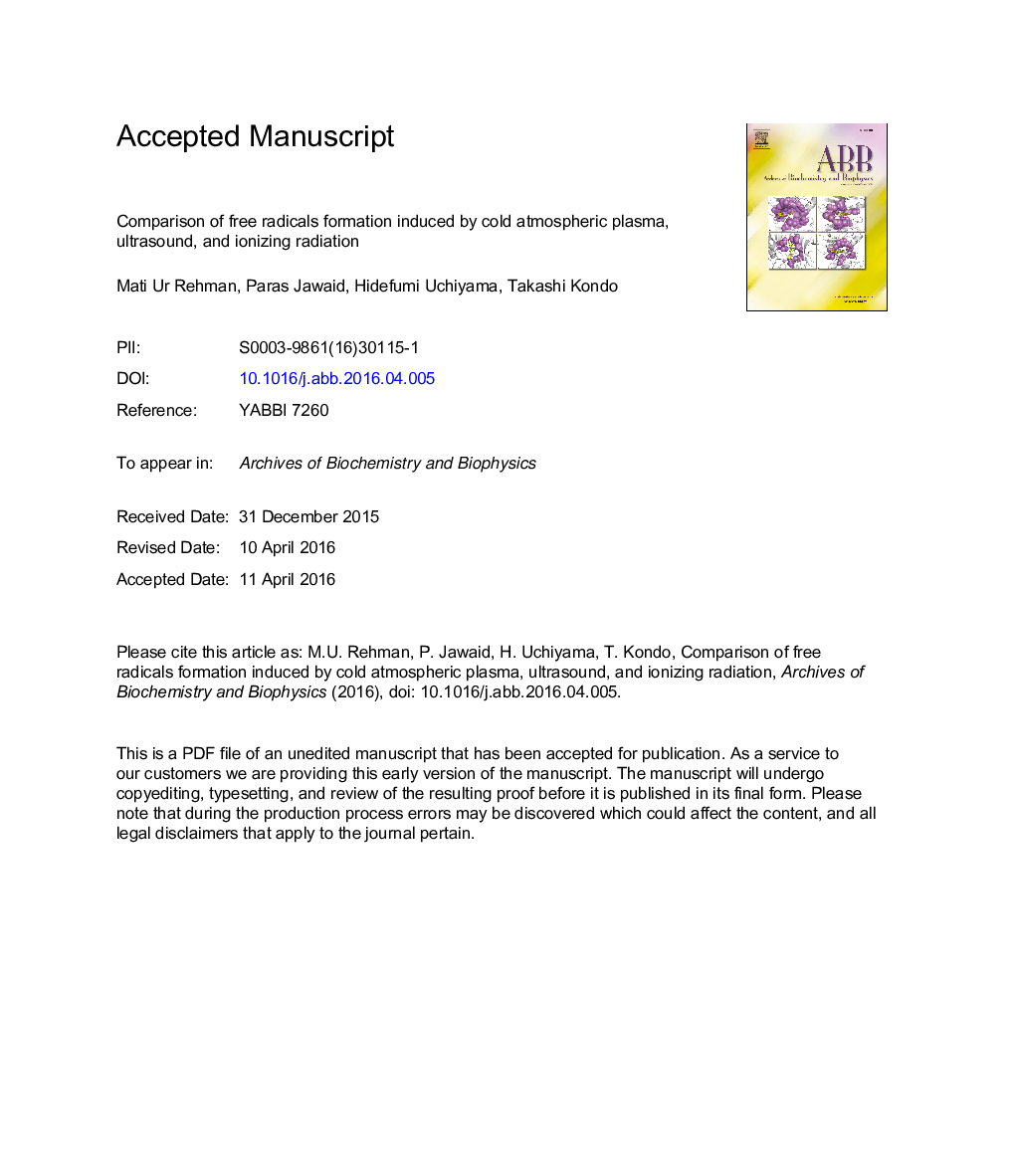| Article ID | Journal | Published Year | Pages | File Type |
|---|---|---|---|---|
| 8289029 | Archives of Biochemistry and Biophysics | 2016 | 29 Pages |
Abstract
Plasma medicine is increasingly recognized interdisciplinary field combining engineering, physics, biochemistry and life sciences. Plasma is classified into two categories based on the temperature applied, namely “thermal” and “non-thermal” (i.e., cold atmospheric plasma). Non-thermal or cold atmospheric plasma (CAP) is produced by applying high voltage electric field at low pressures and power. The chemical effects of cold atmospheric plasma in aqueous solution are attributed to high voltage discharge and gas flow, which is transported rapidly on the liquid surface. The argon-cold atmospheric plasma (Ar-CAP) induces efficient reactive oxygen species (ROS) in aqueous solutions without thermal decomposition. Their formation has been confirmed by electron paramagnetic resonance (EPR) spin trapping, which is reviewed here. The similarities and differences between the plasma chemistry, sonochemistry, and radiation chemistry are explained. Further, the evidence for free radical formation in the liquid phase and their role in the biological effects induced by cold atmospheric plasma, ultrasound and ionizing radiation are discussed.
Keywords
Related Topics
Life Sciences
Biochemistry, Genetics and Molecular Biology
Biochemistry
Authors
Mati Ur Rehman, Paras Jawaid, Hidefumi Uchiyama, Takashi Kondo,
